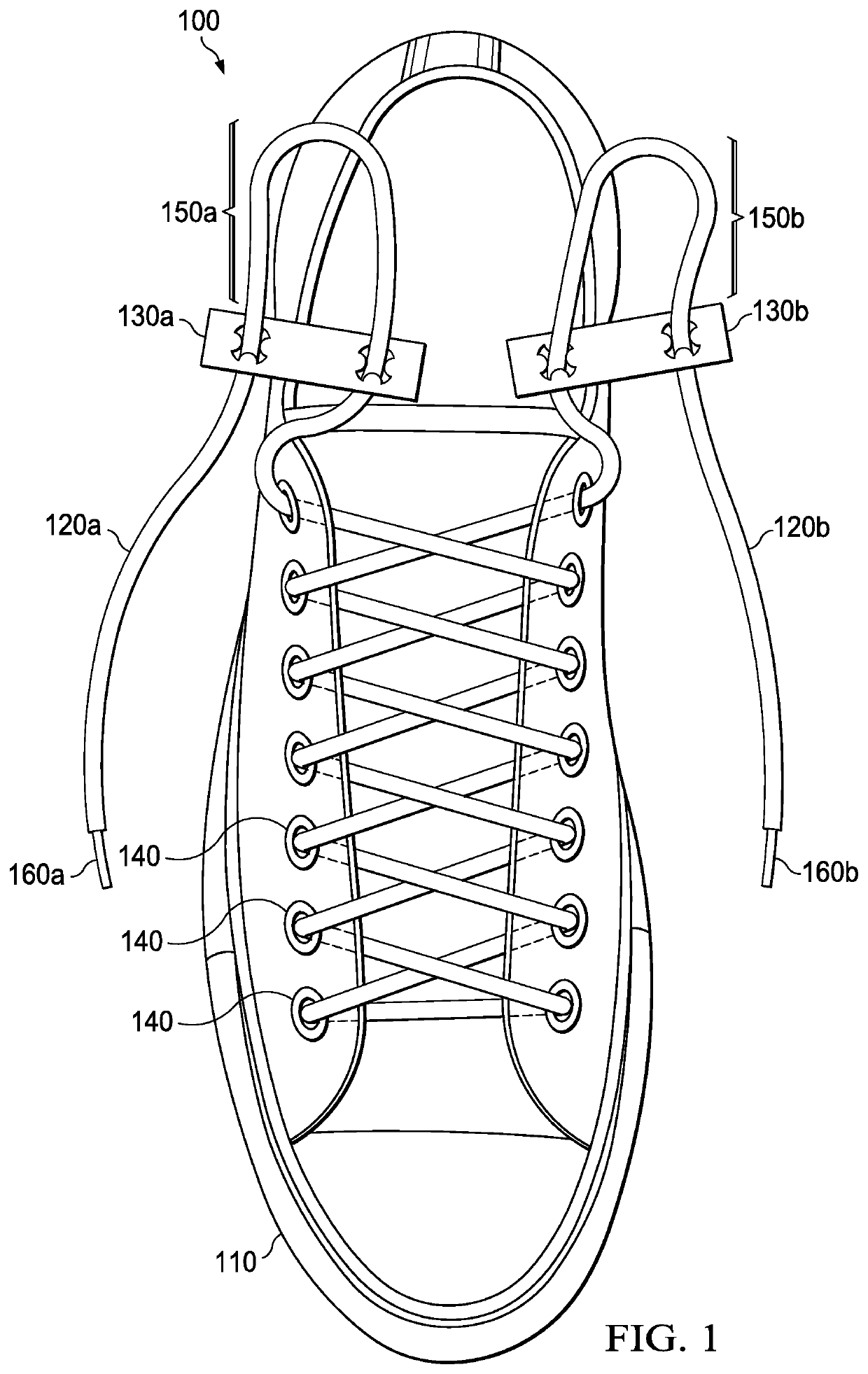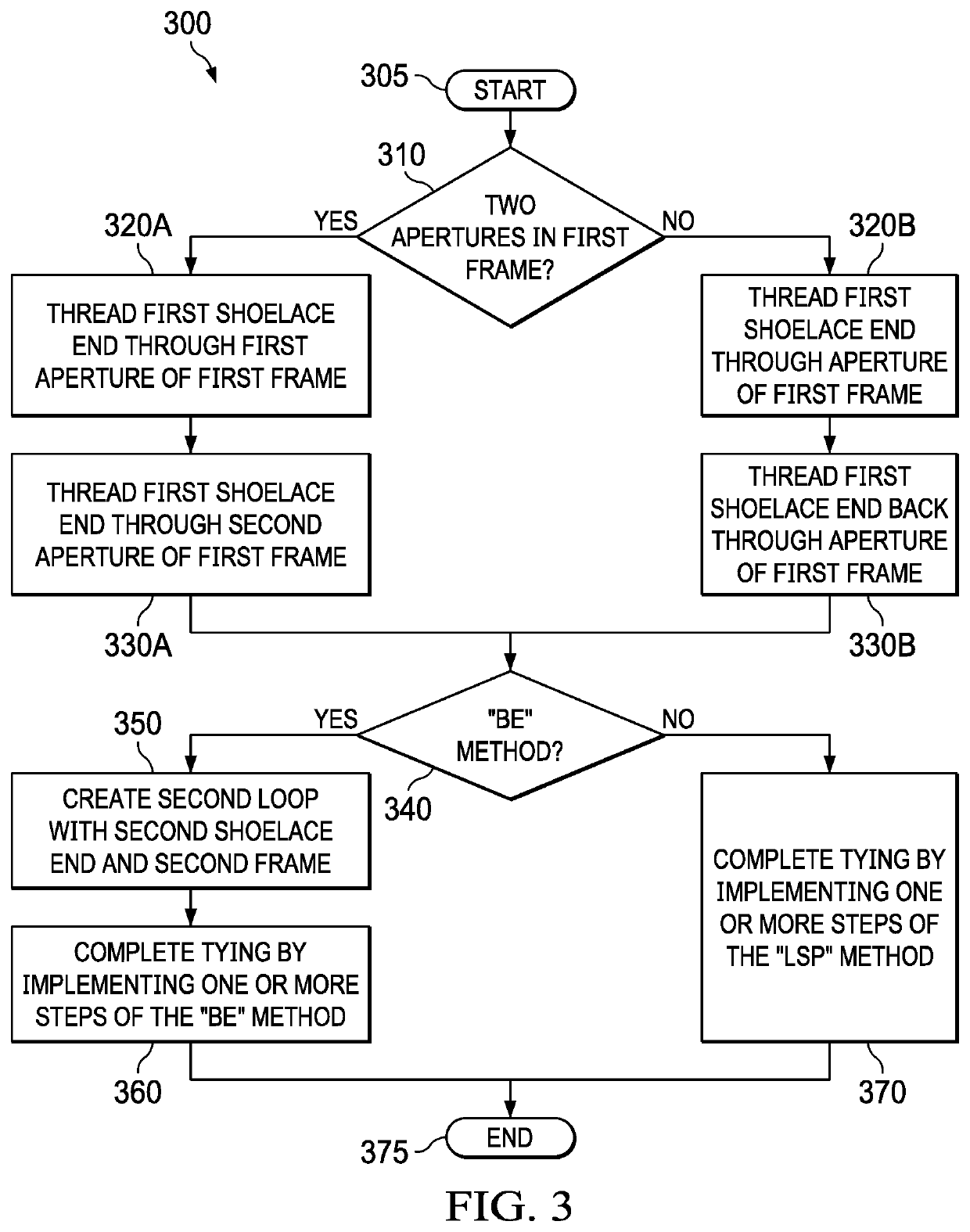System and method of tying a shoelace
a shoelace and system technology, applied in the field of shoelace tying, can solve the problems of the most difficult part the and the prohibitive difficulty of tying a shoelace for some individuals, so as to save appreciable amounts of time, simplify the tying process, and reduce the time it takes to tie a shoela
- Summary
- Abstract
- Description
- Claims
- Application Information
AI Technical Summary
Benefits of technology
Problems solved by technology
Method used
Image
Examples
Embodiment Construction
[0016]Learning to tie a shoelace is a skill that most people learn to master during their lifetime. However, learning to tie a shoelace can pose significant challenges to some individuals. One of the most challenging parts of learning to tie a shoelace is securing a shoelace in one or more loops while tying a knot. As described above, the LSP Method requires the formation and securing of one loop, while the BE Method requires the formation and securing of two loops. Securing a shoelace loop requires a level of coordination that may be difficult to achieve, especially for individuals just beginning to learn how to tie shoelaces or those otherwise lacking the finger coordination required to hold one or more loops in position while performing the rest of a shoelace-tying method (e.g., due to disability). This makes the task prohibitively difficult for individuals who are young, disabled, suffer from arthritis, or otherwise lack precise finger control and dexterity. Even those with the ...
PUM
 Login to View More
Login to View More Abstract
Description
Claims
Application Information
 Login to View More
Login to View More - R&D
- Intellectual Property
- Life Sciences
- Materials
- Tech Scout
- Unparalleled Data Quality
- Higher Quality Content
- 60% Fewer Hallucinations
Browse by: Latest US Patents, China's latest patents, Technical Efficacy Thesaurus, Application Domain, Technology Topic, Popular Technical Reports.
© 2025 PatSnap. All rights reserved.Legal|Privacy policy|Modern Slavery Act Transparency Statement|Sitemap|About US| Contact US: help@patsnap.com



